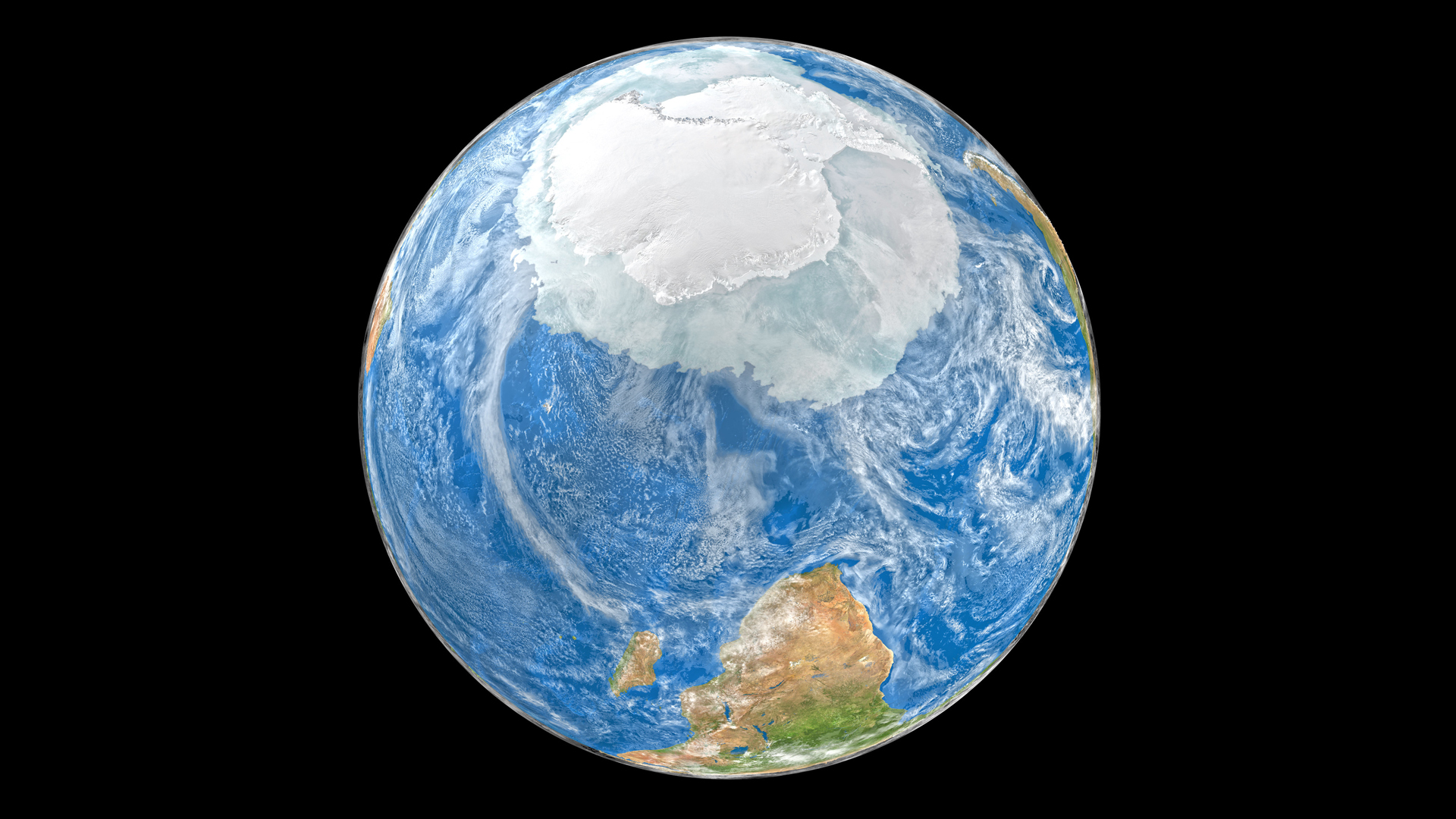'Factorian Deep,' the new deepest point in Antarctica's Southern Ocean, mapped for the first time
The "Factorian Deep" sits more than 24,000 feet below subzero water.

Researchers have published the most detailed map of Antarctica's frigid Southern Ocean to date, including the ocean's new deepest point, the "Factorian Deep," which sits nearly 24,400 feet (7,437 meters) below the sea surface.
Resting at a depth equivalent to about 17 Empire State Buildings stacked top to bottom, the Factorian Deep was discovered in 2019 by American explorer and entrepreneur Victor Vescovo, as part of his Five Deeps Expedition to map the deepest points of the world's five oceans. Vescovo personally piloted a submersible named "Limiting Factor" (for which the Factorian Deep was named) to the bottom of the Atlantic Ocean's South Sandwich Trench – an undersea canyon that spans roughly 600 miles (965 kilometers) of seafloor between South America and Antarctica.
The trench crosses the 60th parallel south, an invisible circle of latitude that is 60 degrees south of the equator, separating the Atlantic and Southern oceans. Vescovo's expedition mapped the entire length of the South Sandwich Trench for the first time ever, uncovering the Southern Ocean's new deepest point just south of the 60th parallel.
Related: A space laser is tracking subglacial lakes hidden in Antarctica
And now, the Factorian Deep has been documented for the first time on a seafloor map. In a new study, published June 7 in the journal Scientific Data, an international team of researchers included the Factorian Deep in a sprawling new map of the Southern Ocean's undersea mountains, canyons and plateaus.
The massive map is a joint effort of the International Bathymetric Chart of the Southern Ocean (IBCSO), which began charting the Southern Ocean in 2013, and the Nippon Foundation-GEBCO Seabed 2030 Project, which aims to map the entire global seafloor by 2030.
The new map draws from more than 1,200 sonar data sets, collected mostly by science vessels from around the world and the sturdy ice-breaking ships that cut a path for them, the researchers wrote. The sea bottom chart covers more than 18.5 million square miles (48 million square km) of seafloor, more than doubling the coverage in IBCSO's first map of the region, which was released in 2013.
Get the Space.com Newsletter
Breaking space news, the latest updates on rocket launches, skywatching events and more!
As vast as that coverage sounds, much work remains to complete the project. If you were to divide the chart's 18.5 million square miles into a grid of squares roughly 5,382 square feet (500 square meters) apiece, only 23% of those squares would have at least one modern depth measurement, according to the BBC.
With that in mind, IBCSO is encouraging all ships passing through the Southern Ocean to turn on their sonars and contribute data to the project.
Visualizing the quirks and contours of the Southern Ocean is important for a host of reasons, IBCSO officials told the BBC. Beyond being useful for navigation, the maps will benefit biological research by pinpointing the locations of undersea mountains (called seamounts), which tend to be hotspots of undersea biodiversity. Ocean depth also influences the movement of currents and vertical water mixing, which factor into climate models that show how oceans move heat around the planet.
Originally published on Live Science.
Join our Space Forums to keep talking space on the latest missions, night sky and more! And if you have a news tip, correction or comment, let us know at: community@space.com.

Brandon has been a senior writer at Live Science since 2017, and was formerly a staff writer and editor at Reader's Digest magazine. His writing has appeared in The Washington Post, CBS.com, the Richard Dawkins Foundation website and other outlets. He holds a bachelor's degree in creative writing from the University of Arizona, with minors in journalism and media arts. He enjoys writing most about space, geoscience and the mysteries of the universe.









